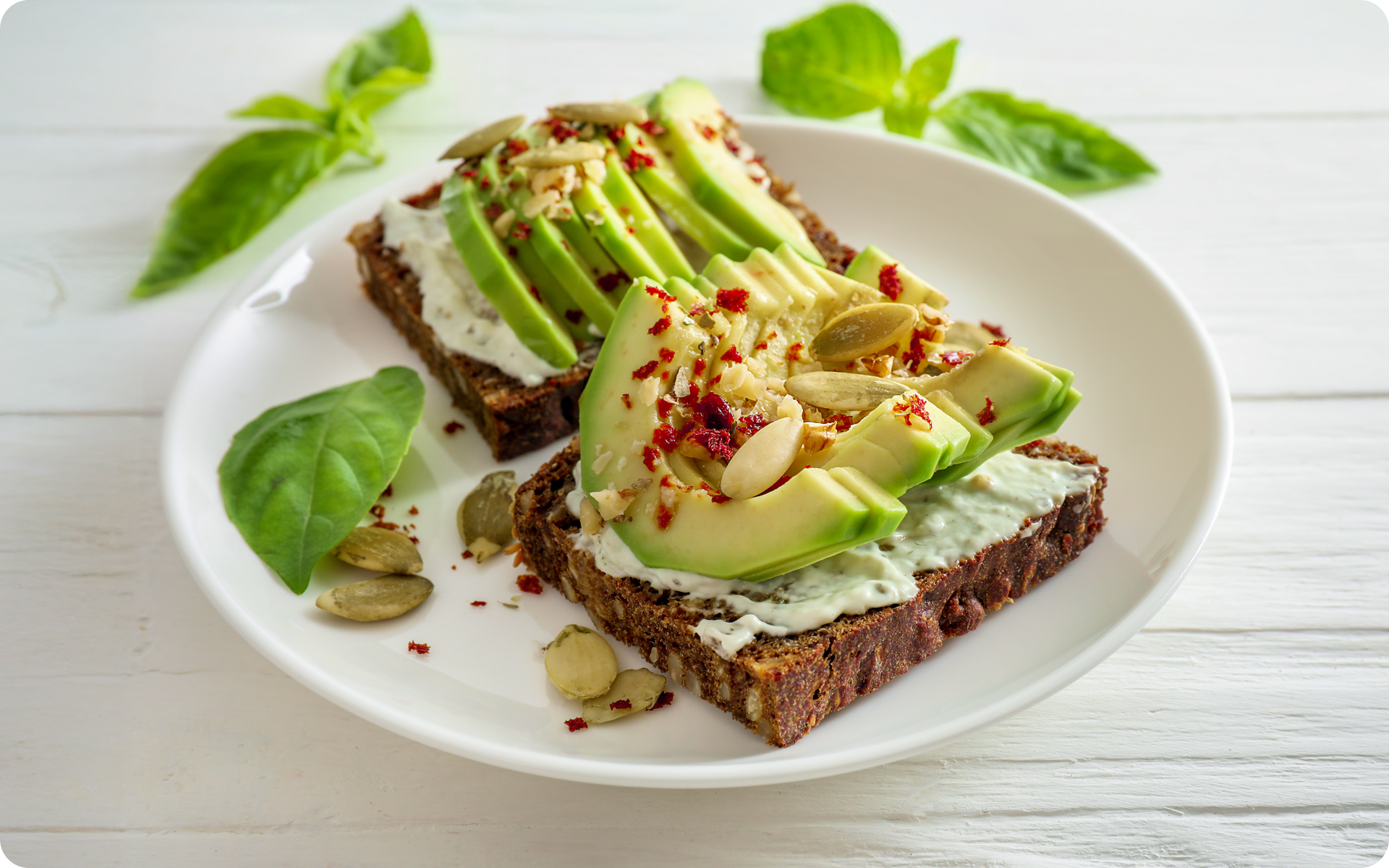Protein is one of the essential macronutrients for optimal health and performance. This is because it contains essential amino acids that are important for the growth and repair of muscles.
Consuming 30 grams of protein per meal has become a popular guideline for those looking to maintain or build muscle mass, lose weight, or simply stay energized throughout the day. But what does 30 grams of protein actually look like when translated into real food?
Understanding portion sizes and protein content in various food sources is crucial in achieving your health goals while enjoying a diverse and satisfying diet. In this article, we will explore a wide range of protein-rich foods, both animal-based and plant-based, which could help you reach the 30-gram mark, along with some creative and delicious meal ideas.
By becoming familiar with these protein sources and their proportions, you can make more informed choices in your daily meals to make sure that you’re fueling your body with the right balance of nutrients.
Before understanding what 30 grams of protein looks like, let us deep-dive into knowing what proteins are and how they improve the body.
What is protein and why is it beneficial to us?
A complex molecule comprising 20 different amino acids, proteins are essential for cell function. These essential yet intricate compounds are responsible for maintaining cellular structure, regulating tissues and organs, supporting the immune system, producing enzymes and hormones, and facilitating tissue repair — making protein an indispensable dietary component. (12)
Protein Sources
Proteins take the form of different sources — all of which are beneficial to human health. The spectrum of protein sources includes:
- Animal-based foods like meat, poultry, fish, eggs, and dairy.
- Plant-based alternatives like beans, legumes, quinoa, and nuts
- Supplements like protein powders, bars, and shakes. These offer quick, convenient, and concentrated protein sources.
The USDA underscores the importance of incorporating a variety of nutrient-dense protein foods from both animal and plant sources into a healthy diet.
Emphasis is placed on choosing lean proteins and prioritising fresh, frozen, or canned options over processed meats to reduce associated health risks. (6)
BetterMe App helps you achieve your body goals with ease and efficiency by helping to choose proper meal plans and effective workouts. Start using our app and you will see good results in a short time.
Benefits of Protein Intake:
- Studies show that healthy protein sources, such as fish, poultry, nuts, and beans, are contributors to the reduction of heart disease, diabetes, and cancer risks. (13)
- Protein’s multifaceted role extends to the development of bone, muscle, cartilage, skin, and blood. (7)
- Protein supports weight control and potentially enhances strength and muscle mass. (14)
- Consuming protein before carbohydrates demonstrate potential benefits, including mitigating glucose and insulin spikes, particularly advantageous for diabetes management. (8)
- Research also associates higher protein intake with reduced odds of cognitive decline over two decades. This correlation is particularly evident with protein sources like beans, fish, and lean poultry. (9)
What Does 30 Grams of Protein Look Like?
Meals with 30 grams of protein will vary depending on the food sources you choose. Combining multiple protein sources within a meal, like legumes with grains or nuts and seeds with vegetables, can help you reach 30 grams of protein while also providing a variety of essential nutrients and amino acids.
It’s important to include a mix of animal-based and plant-based proteins in your diet (as long as you aren’t vegan or vegetarian) to ensure you’re getting a complete profile of essential amino acids.
Here’s a list of foods that can provide approximately 30 grams of protein. Please note that the serving sizes required to reach 30 grams of protein may vary depending on the specific food item:
- Chicken breast: 3.5 ounces (100 grams) cooked
- Turkey breast: 3.5 ounces (100 grams) cooked
- Lean beef: 3.5 ounces (100 grams) cooked
- Pork tenderloin: 3.5 ounces (100 grams) cooked
- Salmon: 4 ounces (113 grams) cooked
- Tuna: 4 ounces (113 grams) canned in water, drained
- Greek yogurt: 1 cup non-fat
- Cottage cheese: 1 cup low-fat
- Eggs: 5 large whole eggs
- Whey protein powder: 1 scoop (check label for exact serving size)
- Plant-based protein powder: 1 scoop (check label for exact serving size)
- Tofu: 5 ounces (140 grams) firm
- Tempeh: 3.5 ounces (100 grams) cooked
- Edamame: 1.5 cups shelled, cooked
- Lentils: 1.5 cups cooked
- Black beans: 2 cups cooked
- Chickpeas: 2 cups cooked
- Seitan: 3.5 ounces (100 grams) cooked
- Quinoa: 2 cups cooked
- Peanut butter: 8 tablespoons
Meals with 30 Grams of Protein
Here’s how foods with 30 grams of protein can be incorporated into your daily meal plan to help you reach your protein intake goals:
30 grams of protein breakfast
A breakfast containing 30 grams of protein could include a Greek yogurt parfait made with 1 cup of nonfat Greek yogurt (about 24 grams of protein), topped with 1/4 cup of granola and 1/2 cup of berries. You could also add a tablespoon of almond butter (about 3.5 grams of protein) and a sprinkle of chia seeds (about 2.5 grams of protein) to reach the desired protein content.
30 grams of protein lunch
For a lunch with 30 grams of protein, you might prepare a grilled chicken salad with 3.5 ounces of cooked chicken breast (about 31 grams of protein), mixed greens, cherry tomatoes, cucumber, and a light dressing. You can also include a side of whole-grain crackers or a slice of whole-grain bread to complement the meal.
30 grams of protein dinner
A dinner containing 30 grams of protein could consist of 3.5 ounces of baked salmon (about 22 grams of protein), served with 1/2 cup of cooked quinoa (about 4 grams of protein) and a side of roasted vegetables. To increase the protein content, you can add 1/4 cup of edamame (about 4 grams of protein) to your vegetable mix.
Read more: 19 Protein Shake Recipes for Weight Loss, Muscle Gain, and Delicious Flavors
30 grams of protein snack
A snack option with 30 grams of protein is a protein shake or smoothie made with 1 scoop of whey or plant-based protein powder (about 20-25 grams of protein), 1 cup of almond milk or cow’s milk (about 1-8 grams of protein, depending on the type of milk), and a banana. You can also add a tablespoon of peanut butter (about 3.5 grams of protein) for extra flavor and protein content.
30 grams of protein vegetarian
A vegetarian meal containing 30 grams of protein could be a lentil and vegetable stir-fry with 1 cup of cooked lentils (about 18 grams of protein), assorted vegetables, and a serving of brown rice. To increase the protein content, you can add 1/4 cup of tofu (about 5 grams of protein) and top the dish with 2 tablespoons of sunflower seeds (about 6 grams of protein).
What is the best time of the day to consume 30 grams of protein?
Apart from the plethora of health benefits that proteins are associated with, the timing or sequence in which you consume them also plays a vital role. While we’ve all been taught that breakfast is the most important meal of the day, it is also one of the best times to eat your 30 grams of protein. (1) Let’s take a look at the why.
Satiety and Caloric Management:
- Protein contributes to feelings of satisfaction and fullness. Research indicates that starting the day with 30 to 39 grams of protein led to a lunchtime caloric reduction of 175 calories for 34 healthy women (2).
- Protein-rich breakfasts may influence subsequent meal choices, promoting a decrease in overall caloric intake.
Fat Burning:
- Dieters incorporating 40% of their daily caloric intake from protein burned more calories and fat over 32 hours.
- This effect was observed in comparison to individuals on a standard American diet (5)
Is 30g Of Protein Too Much?
No, 30 grams of protein is not too much for most individuals. Infact, 30g of protein per meal is a reasonable amount to support muscle growth, weight management, and overall health. 30g of protein per day may even be too low for most people.
That said, the ideal protein intake varies depending on factors like age, gender, activity level, and specific health goals. To determine your personal protein needs, it’s essential to consider these factors and consult with a healthcare professional or registered dietitian.
The Recommended Dietary Allowance (RDA) for protein is 0.8 grams per kilogram of body weight per day for adults, which is considered sufficient for most people (11). However, athletes, bodybuilders, and individuals engaged in intense physical activities may require more protein to support muscle repair and growth.
On the other hand, sedentary individuals may need slightly less protein. It’s important to note that consuming excess protein beyond your body’s requirements can lead to potential health concerns, such as kidney strain or imbalances in other nutrients (3).
To determine your ideal protein intake, follow these steps:
Assess your individual factors
Consider your age, sex, body weight, activity level, and specific health goals. These factors play a significant role in determining how much protein you need.
Calculate baseline protein requirements
The Recommended Dietary Allowance (RDA) for protein is 0.8 grams per kilogram of body weight per day for adults. You can use this as a starting point. To calculate your baseline protein requirement, multiply your weight in kilograms by 0.8.
For example, if you weigh 70 kg: 70 kg x 0.8 = 56 grams of protein per day (4).
Adjust for activity level: If you’re physically active, you may require more protein. Endurance athletes typically need 1.2 to 1.4 grams per kilogram of body weight per day, while strength athletes may need 1.6 to 2.2 grams per kilogram.
Consider your health goals
Your protein intake may vary depending on your specific goals. For instance, if you’re trying to lose weight, increasing your protein intake slightly (up to 25-30% of total daily calories) can help support satiety and preserve lean muscle mass while losing fat. If you’re focused on building muscle, aim for the higher end of the protein range for your activity level.
A balanced approach to protein consumption is to distribute your intake evenly throughout the day. Consuming around 30 grams of protein per meal can help you achieve this balance, as it provides a steady supply of amino acids that promote muscle synthesis and satiety.
Including a variety of protein sources, such as lean meats, fish, dairy, legumes, and nuts, can also ensure that you’re getting the full spectrum of essential amino acids required for optimal health.
If you wish to free yourself from all the extra pounds that have been weighting you down for way too long, start using the BetterMe app and overhaul your entire life!
Can I Build Muscle With 30g of Protein?
Yes, you can build muscle with 30 grams of protein per meal, provided that your total daily protein intake is sufficient and aligned with your individual needs, activity level, and training regimen.
Let’s assume you are a 70 kg individual who is moderately active and aiming to build muscle. Your ideal protein intake might be around 1.6 grams per kilogram of body weight, which translates to 112 grams of protein per day (70 kg x 1.6 = 112 grams).
So, 30 grams of protein per day is way too low and won’t support your goals. However, 30 grams of protein per meal is a great way to spread out your daily protein intake and ensure that you’re consuming sufficient amounts for your individual needs.
To achieve this target, you could plan for three main meals and a snack, each containing about 30 grams of protein. You would reach a total of 120 grams of protein per day, which is close to your target of 112 grams.
This approach ensures a consistent supply of amino acids throughout the day, supporting muscle growth and repair processes in combination with a well-rounded diet and a suitable exercise routine.
Research has shown that consuming protein in moderate amounts throughout the day, rather than in a single large serving, can optimize muscle protein synthesis (10). This way you can havd a steady supply of amino acids to support growth and repair processes.
Aiming for 30 grams of protein per meal can be an effective strategy to achieve this balance, particularly when combined with resistance training and a well-rounded diet that includes other macronutrients such as carbohydrates and fats.
Note that the overall quality of your protein sources also plays a crucial role in muscle development. Opt for high-quality, complete proteins that contain all nine essential amino acids, such as lean meats, fish, dairy, eggs, legumes, and soy products.
Additionally, timing your protein intake around your workouts can further enhance muscle growth. Consuming protein within a window of 1-2 hours before or after your training session can help maximize the muscle-building effects of your exercise routine.
Read more: Does Protein Make You Gain Weight?
How Many Calories is 30g of Protein?
Thirty grams of protein is equivalent to 120 calories because each gram of protein contains 4 calories.
This matters because understanding the caloric content of the macronutrients (protein, carbohydrates, and fats) in your diet can help you manage your overall calorie intake and achieve your health goals, whether it’s weight loss, muscle gain, or maintaining a healthy weight.
When planning your meals it’s essential to consider not only the protein content but also the calories from carbohydrates and fats. By knowing the caloric value of your protein sources, you can make more informed decisions about portion sizes and food choices to create a balanced and nutritious meal plan that aligns with your specific goals.
For example, if you’re trying to lose weight, you might aim to be calorie deficit while still ensuring you consume enough protein to support muscle maintenance. In contrast, if you’re looking to build muscle, you may need to consume a calorie surplus focusing on adequate protein intake to facilitate muscle growth.
Understanding the calories associated with different macronutrients, including protein. This can help you tailor your diet to meet your individual needs and achieve your desired outcomes.
FAQs
What does 30 grams of protein look like?
Around thirty grams of protein can be found in various food sources, such as 3.5 ounces (100 grams) of cooked chicken breast or 1 cup of nonfat Greek yogurt. The appearance will depend on the specific food item and serving size.
How much chicken is 30 grams of protein?
Approximately 3.5 ounces (100 grams) of cooked chicken breast provides around 30 grams of protein.
How to get 30 grams of protein a day?
To consume 30 grams of protein daily, include protein-rich foods in your meals and snacks, such as lean meats, fish, dairy products, eggs, legumes, and soy products. Adjust portion sizes according to the protein content of each food item.
What foods are 30 grams of protein?
Foods that provide around 30 grams of protein include 3.5 ounces of cooked chicken breast, 4 ounces of cooked salmon, 1 cup of nonfat Greek yogurt, and 5 large whole eggs. The serving size needed to reach 30 grams of protein varies depending on the food.
What is 30 grams of protein for breakfast?
A breakfast with 30 grams of protein could consist of 1 cup of nonfat Greek yogurt mixed with granola and berries, or a three-egg omelette with vegetables and cheese. Adjust ingredients and portion sizes to achieve the desired protein content.
The Bottom Line
Understanding the importance of protein in your diet can help you make better food choices to support muscle growth, repair, and overall health. Including 30 grams of protein for breakfast, such as through Greek yogurt parfaits or vegetable omelets, can contribute to a balanced and nutritious meal plan that helps you reach your daily protein intake goals. Aim to include a variety of protein sources throughout your meals to ensure a complete profile of essential amino acids.
DISCLAIMER:
This article is intended for general informational purposes only and does not serve to address individual circumstances. It is not a substitute for professional advice or help and should not be relied on for making any kind of decision-making. Any action taken as a direct or indirect result of the information in this article is entirely at your own risk and is your sole responsibility.
BetterMe, its content staff, and its medical advisors accept no responsibility for inaccuracies, errors, misstatements, inconsistencies, or omissions and specifically disclaim any liability, loss or risk, personal, professional or otherwise, which may be incurred as a consequence, directly or indirectly, of the use and/or application of any content.
You should always seek the advice of your physician or other qualified health provider with any questions you may have regarding a medical condition or your specific situation. Never disregard professional medical advice or delay seeking it because of BetterMe content. If you suspect or think you may have a medical emergency, call your doctor.
SOURCES:
- 50 High-Protein Breakfasts For Weight Loss That’ll Keep You Full For Hours, From Dietitians (2023, womenshealthmag.com)
- Acute effects of higher protein, sausage and egg-based convenience breakfast meals ( 2014, faseb.onlinelibrary.wiley.com)
- Adverse Effects Associated with Protein Intake above the Recommended Dietary Allowance for Adults (2013,nih.gov)
- Adults’ daily protein intake much more than recommended (2010,cdc.gov)
- A high-protein diet induces sustained reductions in appetite, ad libitum caloric intake, and body weight ( 2005, ajcn.nutrition.org)
- Dietary Guidelines for Americans, 2020-2025 ( dietaryguidelines.gov)
- Essential nutrients your body needs for building bone ( 2022, health.harvard.edu)
- Food Order Has Significant Impact on Glucose and Insulin Levels (2015, news.weill.cornell.edu)
- Long-term dietary protein intake and subjective cognitive decline in US men and women (2022, pubmed.ncbi.nlm.nih.gov)
- Moderating the portion size of a protein-rich meal improves anabolic efficiency in young and elderly (2011,nih.gov)
- Protein Intake and Human Health: Implications of Units of Protein Intake (2021,nih.gov)
- The 17 Best Ways to Eat More Protein in 2023 (2023, si.com)
- The Nutrition Source: Protein (hsph.harvard.edu)
- The scoop on protein powder ( 2020, health.harvard.edu)











